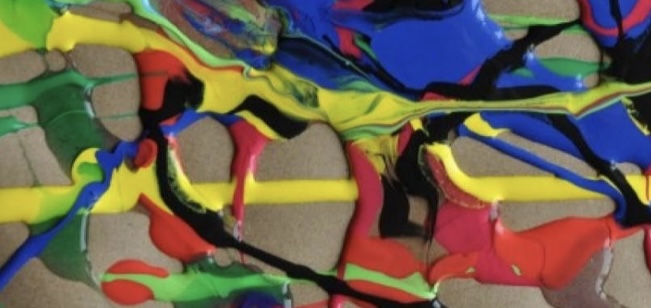This form of psychotherapy can reduce depression, increase self-esteem, and increase self-expression. Here are some of them offered at ccm.edu.au. Here are some examples of people who have found benefit from art therapy. Those with depression or other psychological disorders may benefit from this therapy. But what is art therapy? Is it right for everyone? What are the benefits of art therapy? And is it worth pursuing?
Art Therapy Is a Form of Self-Expression
Many art therapy sessions include activities for personal reflection. For example, “Grow” is a creative prompt that reflects life changes. “Roots” is a therapeutic prompt that explores self-acceptance and self-worth. In addition to being therapeutic, art therapy can promote relaxation and self-worth. Listed below are some benefits of art therapy for individuals. You might also benefit from this therapy.
Art therapy involves experimenting with various art mediums and themes to help individuals overcome mental health issues. The art therapist may also suggest themes for the individual to explore. He or she may also ask the patient questions about the process of making the art and the impact it has on their emotional state. It’s important to note that art therapy is not for everyone. It’s an opportunity to explore feelings, and the benefits can be felt quickly after one session.
Art therapy is a psychotherapy method combining the creative process with psychological counselling. By using tools such as colour, shape, and imagery, patients can explore their feelings and self-understand their experiences. Art therapy can be an effective means of expressing difficult-to-express emotions. However, there are certain requirements for therapists to be allowed to practice art therapy. Here are some of them. The following are some tips for choosing an art therapist.
Art therapy has many uses, from treating medical conditions such as depression to fostering spiritual and emotional growth. In one study, patients with moderate-to-severe depression participated in art therapy sessions for ten hours each. The results showed that these patients’ depression levels decreased after the ten-hour sessions, and some patients returned to work after suffering from severe depression. Another study at the University of Gothenburg found that patients experiencing traumatic events such as a car accident responded positively to art therapy.
Research has shown that art therapy can reduce depression. The authors cite Roth, Yoon, Slade, and Fazel, who each have written several books on the subject. The study also shows that art therapy has other benefits as well, including improving daily life, sleeping, and emotional involvement. The benefits of art therapy may be significant, especially when the sufferer’s mood is erratic and difficult to control. But how exactly does art therapy reduce depression?
One theory about how art therapy helps people with depression is that it can increase the level of dopamine in the brain, which is known to promote feelings of happiness and motivation. It is also thought that art therapy can help people return to work after time off due to depression. Ultimately, however, it is difficult to determine the exact mechanism by which art therapy improves people’s lives, but it has been proven to help many individuals deal with depressive symptoms.
Art therapy may be an effective means of boosting self-esteem. In fact, a study by Drexel University found that participating in art therapy sessions increased the participants’ self-efficacy. Self-efficacy is a psychological construct that describes one’s ability to complete tasks and be successful. This theory has many implications and is worthy of further study. A new study suggests that art therapy can improve self-esteem in women.
People suffering from mental illness often feel like they are losing control of their lives and are unable to balance day-to-day activities. Art therapy is a great way to learn to refocus and cultivate discipline, all while learning to enjoy a healthy lifestyle. Art therapy has numerous benefits for individuals with mental illness, including the potential to increase self-esteem and confidence. By focusing on one’s personal goals and cultivating discipline, art therapy can help them live a more fulfilling and productive life.
It Helps People Cope with Loss
Art therapy has many benefits when it comes to helping people cope with loss. It helps individuals process their feelings and explore their underlying thoughts. Loss can be experienced on many levels, ranging from physical changes to emotional and behavioural changes. Losses can also be traumatic or chronic. Losses may be temporary or permanent, and can range from the loss of a job to the empty nest syndrome. Some individuals even suffer from chronic illnesses and mental health challenges. Regardless of the type of loss experienced, art therapy can be an effective means of exploring underlying emotions.
People who have experienced loss themselves may recommend an art therapist. It is important to find someone who specialises in this area, as not all art therapists are trained to help people deal with their grief. It’s also important to find a therapist who has had experience working with a variety of types of loss. Art therapy can help people make sense of their emotions while using creative expression. Not only can it be healing, but it can also honour the memory of a loved one. In addition to creating a work of art to honour a loved one, people can choose to paint a memorial rock or other item to place outdoors in their yard.
Recent studies have shown that art therapy can promote healing. The art therapy process is especially helpful for those experiencing difficult emotions and experiences. In one study, thirty-two women diagnosed with heart disease were asked to create art therapy drawings of their condition. The images were analysed for colour, composition, and spatial arrangement. The results helped health care professionals understand the complex feelings and experiences of these patients. In the next study, the same artists will explore how art therapy helps them express their feelings and promotes healing.
Throughout history, people have used creative expression to process their emotions and life experiences. Some people are naturally drawn to art; others have found art therapy beneficial for their well-being. People can process meaning and content through art, which allows them to express themselves more freely and uncover patterns in their life. It has many advantages and is a great way to enhance one’s well-being. The benefits are many, and art therapy is available for almost any situation.




